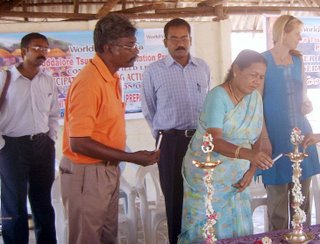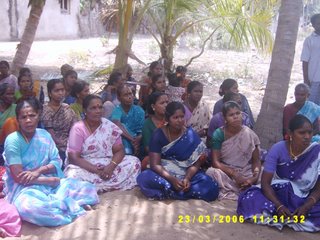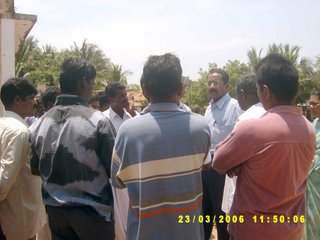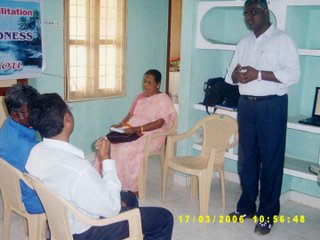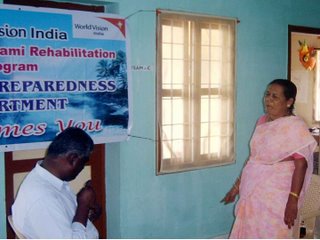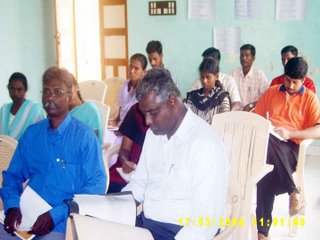Tsunami early warning system by September 2007
Article from "The Hindu" dated 28th Feb 2006
A.V. Ragunathan
The integration of design and engineering aspects to be indigenised: Goel
It is said that the system being highly analytical, it would be free from false alarms Already there are five tide gauges at Andaman and Nicobar, Chennai, Kochi and Visakhapatnam
STONE LAID: P.S. Goel, Director, Department of Ocean Development, at the Centre of Advanced Study in Marine Biology at Portonovo near Cuddalore on Sunday.
CUDDALORE:
The tsunami early warning system will be operational by September 2007, according to P.S. Goel, Secretary, Government of India, Department of Ocean Development (DOD). He disclosed this after laying the foundation stone for the "Disaster mitigation technology demonstration and training centre" on the premises of the Centre of Advanced Study in Marine Biology of the Annamalai University at Portonovo on Sunday.
Mr. Goel said the scientists of the Indian Space Research Organisation and the National Institute of Ocean Technology were working on the system. While the integration of design and engineering aspects would be indigenised, certain equipment meant for the system might be imported. As the system would be highly analytical, it would be foolproof and free from false alarms, he said. Unlike in Japan that was often pounded by the tsunami, it was a rare occurrence in India.
Mr. Goel said the tsunami warning system basically started with seismology activity detection, done in multiple ways. The DOD was establishing the full functional unit at the Indian National Centre for Ocean Information Services at Hyderabad. Already, five tide gauges had been deployed at places such as the Andaman and Nicobar Islands, Chennai, Kochi and Visakhapatnam, to monitor changes in tide behaviour.
When asked whether any contour changes in the sea were visible post-tsunami, Mr. Goel said there were no significant changes along the coastal areas in the mainland. L.B. Venkatrangan, Vice-Chancellor of Annamalai University, T. Balasubramanian, Director, Centre of Advanced Study in Marine Biology, and Gagandeep Singh Bedi, Collector, participated.
Mr. Goel said the tsunami warning system basically started with seismology activity detection, done in multiple ways. The DOD was establishing the full functional unit at the Indian National Centre for Ocean Information Services at Hyderabad. Already, five tide gauges had been deployed at places such as the Andaman and Nicobar Islands, Chennai, Kochi and Visakhapatnam, to monitor changes in tide behaviour.When asked whether any contour changes in the sea were visible post-tsunami,
Mr. Goel said there were no significant changes along the coastal areas in the mainland. L.B. Venkatrangan, Vice-Chancellor of Annamalai University, T. Balasubramanian, Director, Centre of Advanced Study in Marine Biology, and Gagandeep Singh Bedi, Collector, participated.

